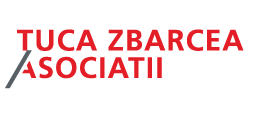Technology is part of our lives. And technological development leaves its mark on our lifestyle. We saw that in our own homes when we gave up our traditional landlines and used the fixed broadband Internet connection instead, at higher and higher speeds. We see that when exploring the ever-expanding features and options of our mobile handsets. We also see that while viewing high definition programs or when accessing digital interactive services through our TV sets, and when faced with the option of placing calls using traditional services or through new applications. We can see the technological development when rural areas have access to electronic communications and are thus able to reap the benefits of the digital economy.
We also see technology in our cars, in various industrial applications aimed at supporting a digital single market. But how are all these and other technological developments reflected or supported at the legislative level under the newly-enacted Electronic Communications Code?
Changes Brought by the New Electronic Communications Code
The new Electronic Communications Code that was enacted at the EU level in December 2018 brought significant changes in various areas of the electronic communications sector. Several of these changes are briefly summarized below.
Categories of Electronic Communications Services
Electronic communications services are now split into three categories: (i) Internet access services, (ii) interpersonal communications services (number-based and number-independent), and (iii) services consisting wholly or mainly in the conveyance of signals such as transmission services used for the provision of machine-to-machine services and for broadcasting. This classification reflects the technological developments brought about by various new services and applications, such as VoIP, IoT services, and M2M communications and creates the basis for setting different regulations and obligations which are appropriate for each category of electronic communications services.
National Regulatory Authorities
The independence of national regulatory authorities is a key element of the European Electronic Communications Code. To this effect, the Code contains provisions aimed at reinforcing and strengthening the independence of national regulatory authorities by making the appointment of the head of the national regulatory authority subject to an open and transparent selection procedure that is based on merit, skills, knowledge, and experience. To ensure the independence of the head of the national regulatory authority, dismissal before the expiry of the term of office may occur only if he or she no longer fulfils the conditions required for the performance of his or her duties, and not for any subjective reasons.
Development of Very High Capacity Networks
The deployment of very high capacity networks is expressly referred to as being within the objectives of the national regulatory authorities. The European Electronic Communications Code provides for the making of a geographical survey of the reach of broadband networks to enable the national regulatory authorities to identify those areas where, for the duration of the forecast period, no entity has deployed/extended or is planning to deploy/extend a very high capacity network. This information may also be used in the allocation of public funds for the development of broadband infrastructure, to define coverage obligations attached to the right of use of the radio spectrum, in relation to universal service obligations, and when defining the relevant markets in the electronic communications sector.
Ex-Ante Regulation
Several new provisions on ex-ante regulation are contained in the European Electronic Communications Code. First, the national regulatory authorities shall carry out analyses of the relevant markets every five years, instead of every three years. Second, it is expressly stated that access obligations may be imposed in relation to civil engineering (buildings, towers, antennae, poles, masts, ducts, manholes, cabinets, etc.), even though such assets are not part of the relevant market. Third, the European Commission will impose a single maximum mobile voice termination rate and a single maximum fixed voice termination rate, both applicable at the European Union level. Fourth, a new voluntary commitments procedure has been established in relation to conditions for access, co-investment in networks, or both. Fifth, lighter obligations may be imposed on undertakings operating only at the wholesale level and fulfilling certain conditions.
Universal Service
The minimum scope of universal service has been redefined to include broadband Internet access services and voice communications services at fixed locations.
Numbering Resources
In order to contribute to the development of M2M services, the European Electronic Communications Code contains provisions allowing the grant of rights of use of numbering resources to undertakings other than providers of electronic communications networks and services.
By Vlad Cercel, Partner, Tuca Zbarcea & Asociatii
This Article was originally published in Issue 6.8 of the CEE Legal Matters Magazine. If you would like to receive a hard copy of the magazine, you can subscribe here.




